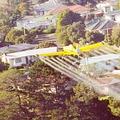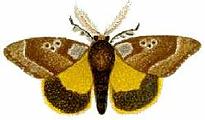 紐西蘭「人民聽證會」(People's Inquir)22日對奧克蘭查懷塔克雷區空中噴灑飛蛾農藥的影響展開會議,一名西奧克蘭居民於會中控訴:「我美麗的紐西蘭家園發生了一些事。人民受到嚴重的傷害,政府卻置之不理」。這次聽證會的目的,是為該區域受波及居民提供一場公開陳述的機會,並讓在場的國內外專家委員會,聽取居民對殺蟲噴液危害性的指證。在此之前,政府單位拒絕舉辦公聽會。
紐西蘭「人民聽證會」(People's Inquir)22日對奧克蘭查懷塔克雷區空中噴灑飛蛾農藥的影響展開會議,一名西奧克蘭居民於會中控訴:「我美麗的紐西蘭家園發生了一些事。人民受到嚴重的傷害,政府卻置之不理」。這次聽證會的目的,是為該區域受波及居民提供一場公開陳述的機會,並讓在場的國內外專家委員會,聽取居民對殺蟲噴液危害性的指證。在此之前,政府單位拒絕舉辦公聽會。
22日早上,與會專家聽取了有關化學物質灼傷肺部的口頭證詞:為數眾多的民眾因呼吸道疾病入院治療,而且健康情況惡化情況日益加劇,並因此讓許多家庭走向崩潰……,凡此種種悲劇,正在西奧克蘭地區上演。
出席聽證會的居民說,當地居民普遍有激烈咳嗽病症,有的則有劇烈的皮膚腫脹、乾裂、以及眼部刺激症狀,而這些都只發生在飛蛾農藥噴灑期間。
過去8年來,紐西蘭農林部(MAF)針對外來入侵的蛾類──白點毒蛾(white spotted tussock moth)、蘋果蠹蛾(painted apple moth)及舞毒蛾(gypsy moth),實施過三次大規模的殲滅行動。
農林部生物安全局局長佛朗頓(Dr. Ruth Frampton)在2001年曾說:「對所有土地進行空中噴灑作業是有其必要性的,惟有如此才能將消毒人員難以企及的區域以及藏身在高大的樹種上的害蟲一舉殲滅。我們會使用『Foray 48B』藥劑──這是以蘇力菌克氏變種(b. thuringiensis var. kurstaki, 簡稱Btk)為基礎的農藥,國內外都曾以此來消除類似的害蟲。它對消滅幼蟲特別有效,但並不會傷害其他動物,如魚類、鳥類、植物或人類。」
西奧克蘭地區在2002年1月到2004年5月間為了消滅蘋果蠹蛾,在這次持續最久且最為頻繁的噴藥行動中,社區健康研究報告中指出有超過400位居民因空中噴藥而引發健康上的各式不適徵候。
2004年5月13日,農林部於宣布停止在西奧克蘭地區進行空中噴灑作業以消滅蘋果蠹蛾的行動。
 "Something happened to my beautiful New Zealand. People were hurt and harmed so much and nobody was there to hear it," a West Auckland resident told the People's Inquiry into aerial spraying for moth control in Waitakere today. Area citizens are conducting the Inquiry to provide a forum for affected residents to testify about the spray's impact to a panel of national and international commissioners after the government declined to hold a hearing.
"Something happened to my beautiful New Zealand. People were hurt and harmed so much and nobody was there to hear it," a West Auckland resident told the People's Inquiry into aerial spraying for moth control in Waitakere today. Area citizens are conducting the Inquiry to provide a forum for affected residents to testify about the spray's impact to a panel of national and international commissioners after the government declined to hold a hearing.
This morning, commissioners to the People's Inquiry heard oral testimony of chemical burning of the lungs, numerous hospitalizations for breathing problems, and the exacerbation of numerous serious health conditions, as well as huge disruption in the lives of families' rights across West Auckland.
A violent coughing condition was described as common among residents. Skin conditions which were so severe that the skin swelled and split, and severe eye irritation which only occurred during spray episodes.
Over the past eight years the New Zealand Ministry of Agriculture and Forestry (MAF) has conducted three major eradication campaigns against incursions of alien moths - the white spotted tussock moth, the painted apple moth and the gypsy moth. "
Aerial spraying to complement ground spraying is necessary to eradicate the pest from hard-to-reach areas and tall trees. Foray 48B, a Btk-based spray will be applied. It has been used before in New Zealand and overseas to eradicate similar pests. It specifically affects caterpillars and does not harm other animals, fish, birds, plants or humans," said MAF's Director of Forest Biosecurity in 2001, Dr. Ruth Frampton.
During the most prolonged and intensive of the campaigns, that of the spraying of West Auckland for the painted apple moth from January 2002 to May 2004, over 400 people have reported to a community health research project that they had symptoms of ill health resulting from the spray.
On May 13, 2004, MAF declared an end to the aerial spraying operation in West Auckland for painted apple moth.



